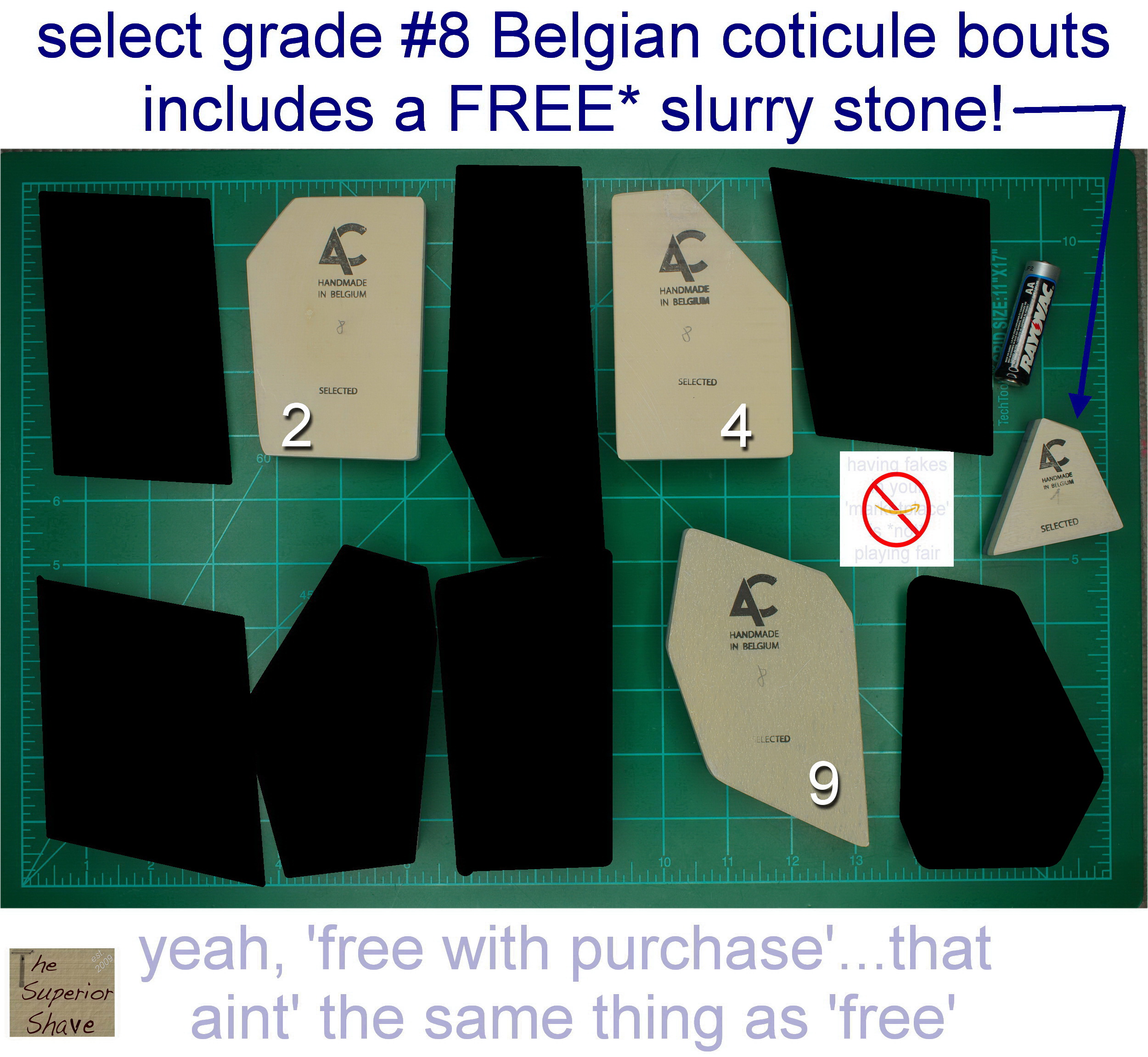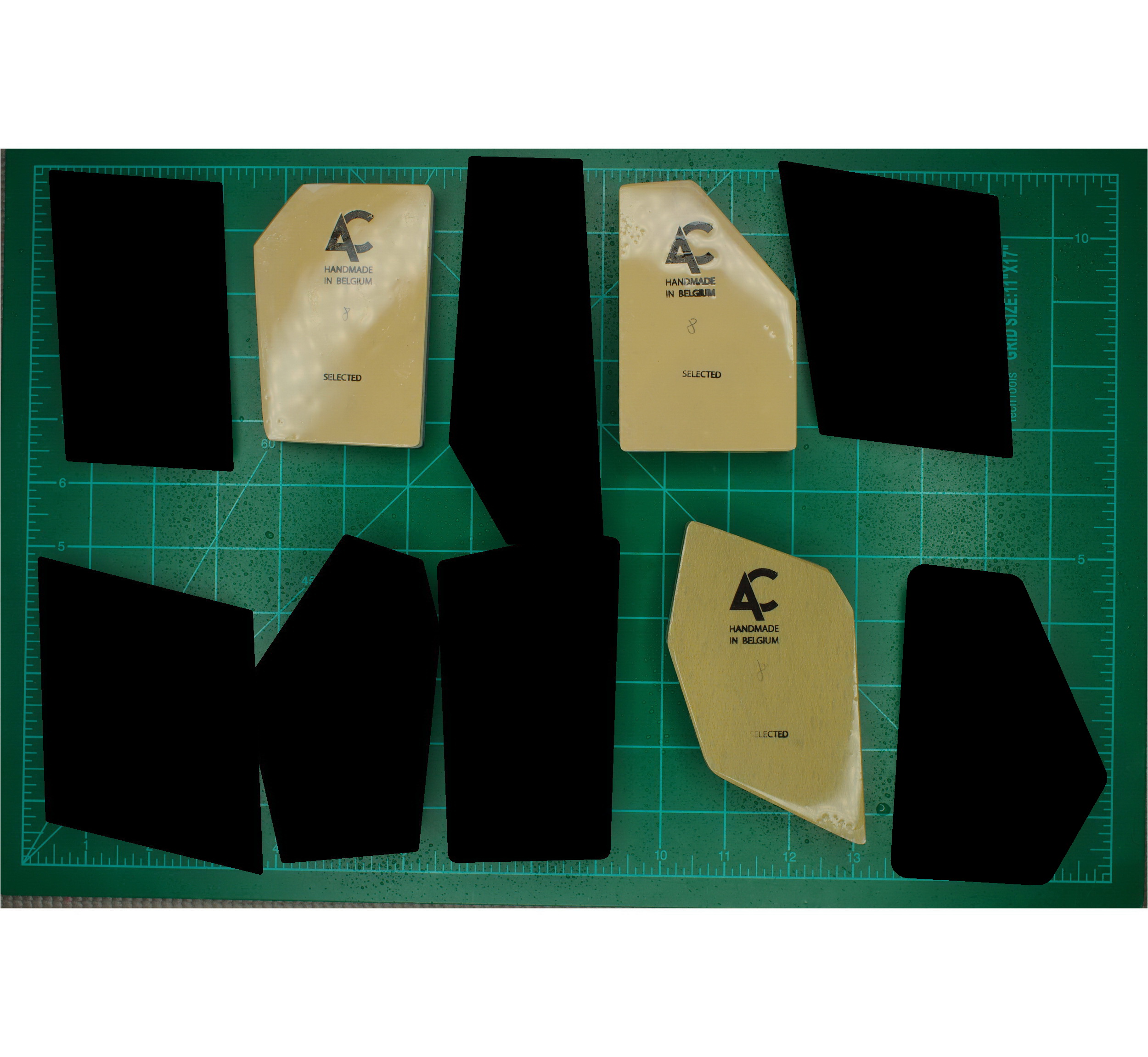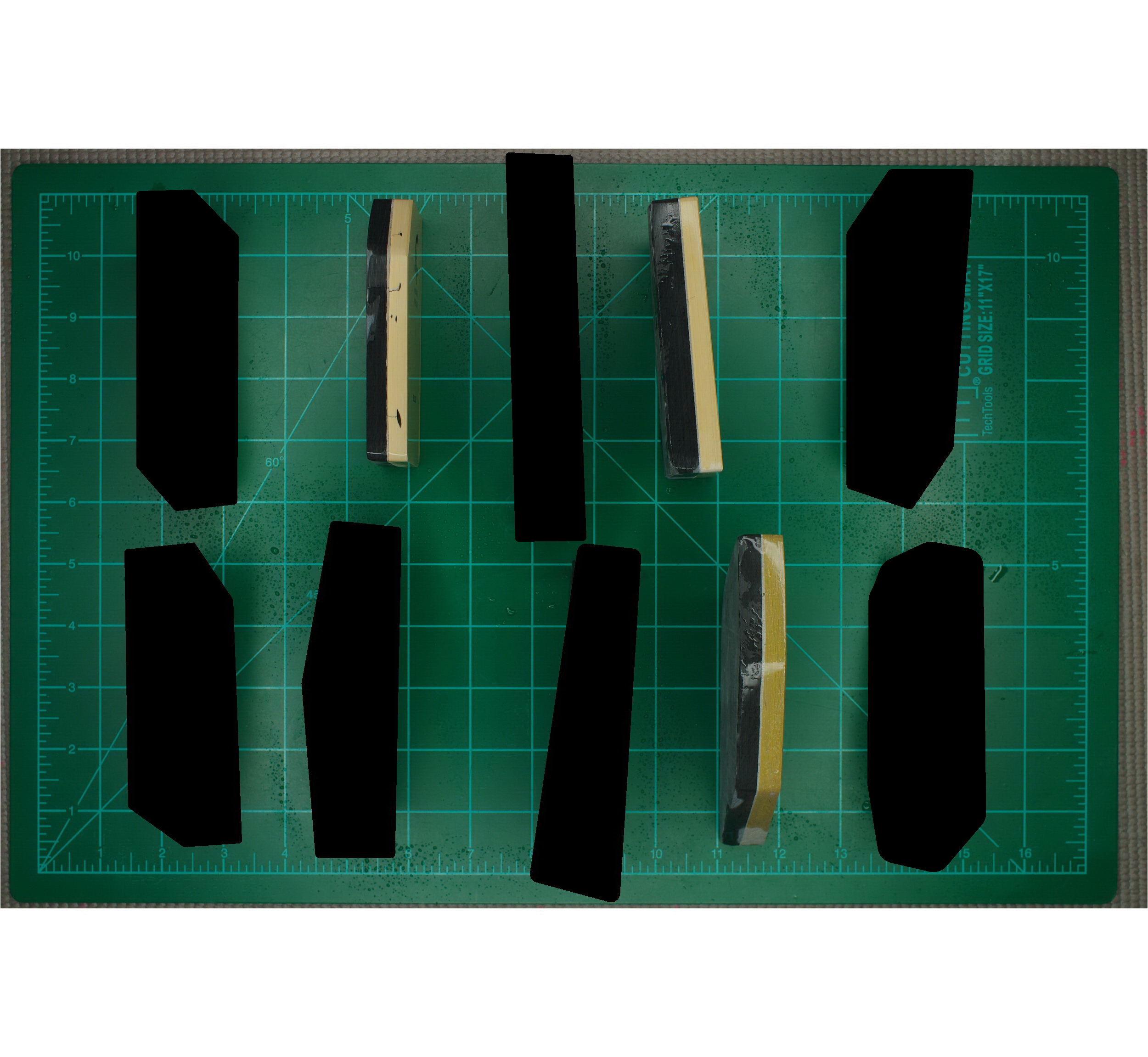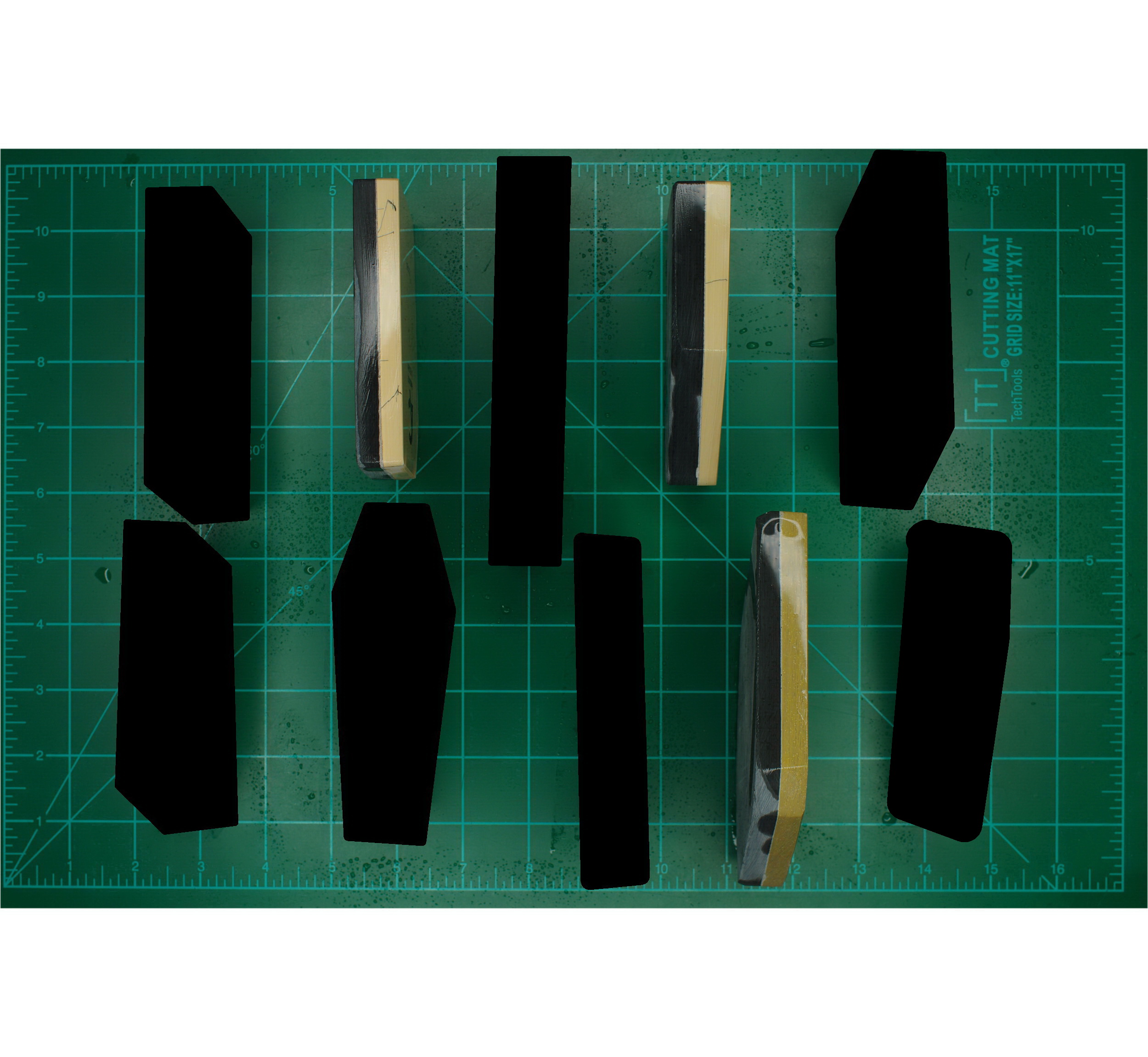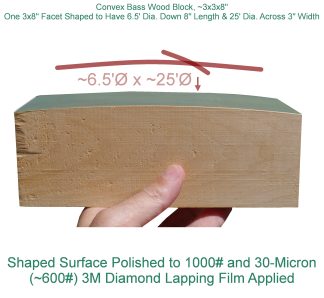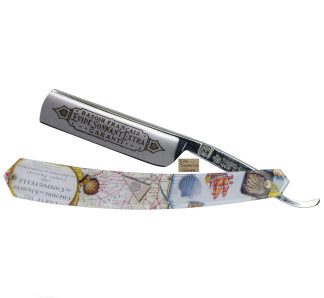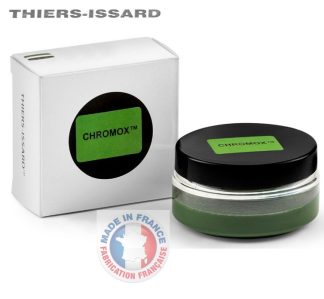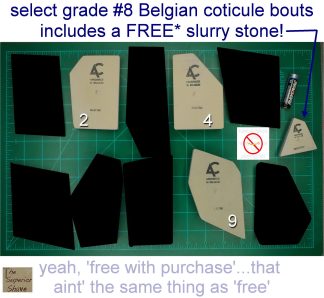Description
I don’t care which ‘vein’ it is, but if the Belgians write on the stone definitively I’ll say so. The best coticule I’ve ever used or owned is a no-name/not-vein-designated “standard” grade stone (because it had some fissures/deposits, but they don’t harm str8rzrs), and it is a pity that it will forever be 40x175mm and not a penny wider, but it goes to show you can find greatness in the least hallowed places, such as a stone that sat unsold on my old, old site for at least a year!
In switching my own honing over to wheel shaped forms [to achieve a concave bevel profile either in part or in whole] the last ~4 years, I have realized renewed success with the ole’ coticule. My beard, quite surprisingly to me because well in to my early thirties I enjoyed broad swaths of baby-bottom-soft beard zone skin, has become a genuine problem. Whisker density’s low, sure, but the rat bastards are coarse and stiff, and you can tell it isn’t good just from listening to the videos of me shaving in my office here…it doesn’t sound much better at home after a shower! My wife has one of these things (please use that link to finalize a purchase, it doesn’t have to be the steam thingy, it can be this or this or even this, just click it and make a buy within the ‘cookie’ time they decree and I’ll earn 1% or more, I’m struggling out here yo! also, my house burned down >5mos. ago and as I write this I am STILL fighting with the rat bastard State Farm adjuster Stephen…every contractor in town knows Stephen, Stephen’s who they assign around here on any big claim to give you the runaround), and I have used it to pre-shave, and it definitely helped. That’s a whole lot of work, and it is boring, too. Using the razor’s fun. Anyway, here writing at fifty point five spins around the sun, to get a comfortable and close shave around the goatee zone of my face is an extreme challenge for any shaving system, and for at least five years prior to switching to the wheel-shaped form, I’d entirely given up upon coticules.
But that was because the bevels I used were the standard flat bevels we all “knew” were the correct shape for a straight razor. Once I started thinning the rear of the bevel to make the tip a bit more flexible, and then by extension finishing all the way through with convex surfaces so that my bevel’s tip was two curved arcs coming together instead of two lines intersecting, I was able to use the coticule quite comfortably and close, on occasion, in the tough parts. It is still a big ask, but it can be done. That’s a huge accomplishment for my face at this point.
I think setting up your bevel to be concave with other stones and finishing on these various polygons, kept flat, and using the flat part sparingly, can combine the best attributes of the coticule’s signature variable scratch pattern/apex and a keen (= thin behind the apex) edge able to tackle a rough whisker. You see, hair just wants evermore perfect thinness of a metal apex; the thinner, the more able to enter a hair. Skin, however, might not love that. A coticule’s great at making skin happy, less able to make a rough whisker get penetrated as easily as a Shapton 30000, natural Japanese stone progression, Arkansas stone, etc. etc. etc.
But the coticule’s signature skin pleasure, something singularly unique, can keep its siren song in your head for ages. I wholly endorse for new honers or new-to-concave-bevel-honers using a progression of three shapes for your straight razor’s bevel form, starting with a quite convex whetstone (= this means the diameter of its imaginary wheel is small) to establish an edge, switching to a finer grit stone with a less convex form (= this means the diameter of its imaginary wheel is large) to refine the front of what you’ve just made, and finishing with a flat coticule bout and water or oil alone.
Both softer and harder coticules can be excellent in this regard. A softer stone will yield a more mellow cutting edge apex for my face, but the stone itself will require more maintenance (reflattening), and I would argue the use of the stone is a bit more challenging. You see, you want to have enough downward pressure on the stone to engage the stone/apex intersection, but not enough pressure to allow that wafer thin razor edge to begin flexing to meet the stone’s surface. When you’ve got a good stone/edge coupling and the razor’s bevel’s tip is meeting that stone without bending to do so, you’re assured of a nice crisp easily-maintained cutting edge apex. On a hard stone, I would argue for the use of an oil of some sort to achieve that aim, and if you would like to switch between oil and water experimentation the oil to choose is Ballistol because it can be so easily diluted with water and removed entirely after use. On a softer stone, water-only is great here, and you might even want to do it under a thin running stream with the stone in hand.

